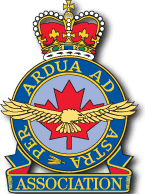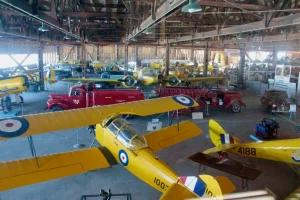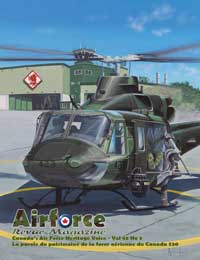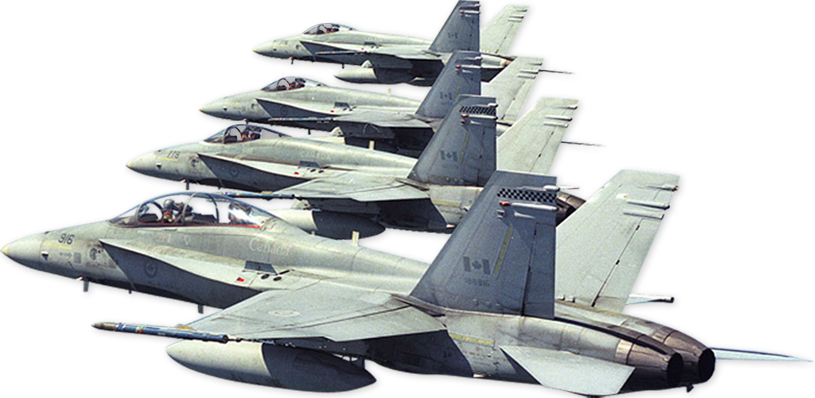More information on the Commonwealth Air Training Plan Museum
The Commonwealth Air Training Plan Museum is Canada’s only museum dedicated solely to preserving the history and artifacts of the British Commonwealth Air Training Plan (BCATP) or (The Plan) of 1939-1945.
History of the Creation of the British Commonwealth Air Training Plan
The first World War set a precedent for the British Commonwealth Air Training Plan (BCATP) in Canada. Fully two thirds of the 21,000 Canadians who served in Britain’s air forces in the First World War entered through the RFC/RAF Canada, a recruiting and training organization established in Canada but controlled from London and commanded by a British officer.
The BCATP had its origins in the pre-war determination of the strategic requirements of the RAF. the RAF proceeded to rebuild itself in the same manner that it had during the first World War when a large portion of the aircrew was drawn from outside Britain. Candidates were selected and trained in their home countries and arrived in Britain as fly qualified pilots under the command of the RAF. Canada insisted that for WWII Canadian trainee graduates would eventually be under the command of the RCAF.
On 17 December 1939, agreement was reached between the U.K, Australia, New Zealand and Canada on the training of pilots and other aircraft crews in Canada for subsequent services overseas. The Canadian government initially agreed to construct some 60 entirely new air training schools and to expand 20 existing smaller units. the RCAF would provide the training facilities to support the BCATP.
The Purpose of the BCATP were:
- to train air and ground crew for use in a combined commonwealth effort to defeat the Axis Powers (Germany and Italy)
- to use facilities in Canada for this training plan. Canada had almost unlimited space, good flying conditions, and was at a safe distance from the scene of war
- to be a meeting and training place for Canadian, British, Australian, New Zealand and other Commonwealth personnel, as well as those who escaped from occupied Europe
Scope of the BCATP
Initially “The Plan” was to consist of; 3 Initial Training Schools, 13 Elementary Flying Training Schools, 16 Service Flying Training Schools, 10 Air Observer Schools, 10 Bombing and Gunnery Schools, 2 Air Navigation Schools and 4 Wireless Schools. Additional supporting facilities for recruitment, training, maintenance, and administration brought the total to 74 schools and units. All units of the original program, except for three bombing gunnery schools, were in operation by the end of the September 1941, seven months ahead of schedule. During 1941, 1,218 building for various types were completed and 28 new schools were opened.
BCATP changes were readily absorbed. In July 1940, the Canadian government accepted a British proposal to move 14 RAF schools to Canada. The new year, the RAF indicated that it wanted to relocate even more schools, bringing their numbers to 35, along with four operational training units and No. 31 Personnel Depot. Under a new agreement signed in June 1942, the termination date of the BCATP was extended to March 1945 from March 1943. The BCATP reached its peak at the end of 1943 with 73 BCATP and 24 RAF flying schools in operations, supplemented by 184 ancillary units. At the peak of the war in 1944 there were 253,000 in the RCAF.
During its five year life, “The Plan” involved almost 360 units and schools operating from approximately 230 sites, not including relief airfields. “the plan” exceeded expectations: 131,553 aircrew from four nations were trained as well as some 44,000 ground crew, including approximately 17 000 in the Women’s Division. While the purposes & the glory of the “Plan” was training aircrew this training could not have been carried out without the ground crew. It is generally conceded that it took ten persons on the ground to keep one in the air. The training of ground crew was just as rigorous as that of the aircrew but generally less appreciated by the general population. Ground crew consisted of everything from aero engine mechanics(fitters( & air frame mechanics(riggers), instrument technicians, administration, vehicle mechanics & drivers to cooks, service police & some in other trades & occupations. More than 100 new airfields were built and many more vastly improved and expanded.
In terms of manpower involved, deadlines met and financial expenditure, the building of “the plan” exceeded the buildings of the CPR. It was an undertaking whose success was underpinned by Canadian contractors, flying clubs, other government agencies and the ordinary person in the street. After the war and even today “the plan’s” legacy serves Canada. The accomplishments were both numerous and impressive:
- Some 8,300 buildings erected of which 799 were hangars or of hangar-type construction; fuel storage totalling more than 26 million gallons installed
- 300 miles of water mains and a similar length of sewer mains laid, involving 2 million cubic yards of excavation
- 100 sewage treatment and disposal plants and 120 water pumping stations completed
- Steam generation approached 80,000 horsepower
- More than 2,000 miles of main power lines and 535 miles of underground electrical cable placed, servicing a total connected electrical power load of over 80,700 horsepower.
Legacy of the British Commonwealth Air Training Plan for Manitoba
When the was over many of the training bases were converted to civilian use thus providing several more airfields than would have been the case had the BCATP no existed.
The training establishment changed the social and economic conditions in man communities for ever. For example, the influx of 1,500 or more trainees and staff were added to places such as Virden, Neepawa, Souris, etc. Hundreds of BCATP buildings became community halls, hockey rinks, housing, and business structures.
National Legacy
Became young men and women from all parts of Canada came together during training, it was probably one of the greatest unifying forces in our history.
The Commonwealth Air Training Plan Museum
The museum had its beginnings in 1980 when a local group headed by Ed Baker became concerned that several trainer aircraft owned by Wes Agnew of Hartney, Manitoba, would be sold to foreign interests. Mr.Agnew was a RCAF Flight Instructor in the BCATP and had a desire to see a Museum formed to honour the men and women who trained under “The Plan”. A deal was struck with Mr. Agnew and his five aircraft formed the nucleus around which the Museum was formed.
The Museum opened in 1981 in Hangar No. 1 at the Brandon Airport. Located one mile north of the city, the airfield was the site of No. 12 Service Flying Training School operated by the BCATP during WWII.
Construction of the school, in which the museum is located, began on November, 1940 and was completed and opened for service on May 10, 1941. The Hangar was one of the 5 built at #12 SFTS and was used to hangar the Cessna Crane aircraft which were used for pilot training.
The hangar was decommissioned on March 30, 1945.
The mandate of our museum is to collect, preserve, restore, and display artifacts of the British Commonwealth Air Training Plan (BCATP) and to commemorate the 18,039 who gave their lives while in the RCAF between 1939 and 1945.
During the formative years a concerted effort was mounted by volunteers to retrieve and store over 50 airframes and hundreds of parts of various aircraft from farms on the Prairies. This cache of parts has enabled the Museum to rebuild several aircraft and will serve as a source of restoration material for many years to come.
The airport is not administered by the City of Brandon and the Museum premises are leased from the City under a long-term lease at nominal cost. Museum aircraft have access to the airport runways for flying activities.
Funding for initial operation was by way of Charter Member fees, individual and service club donations In 1984 a “Destination Manitoba” grant enabled the Museum to improve the premises and secure title to several trainer aircraft.
A dedication Ceremony on June 4, 1984 dedicated the museum as a Memorial to all of Canada’s airmen and airwomen who died in training and operations during WWII.
Once the Museum opened, individuals began to donate other artifacts used during training and actual operations overseas.
One of the major undertakings was the research and compiling of a “memorial Book” containing the name and short biography of each of the Canadian airmen and women lost in training and operations during WWII. Also included are the name of airmen from other countries who served & died with the RCAAF. This book contains over 18,000 biographies and is displayed in the Museum’s Chapel. The first edition was published in 1992, sold out, and the second edition was printed in 1996.
Mission
Our mission is to commemorate the British Commonwealth Air Training Plan by telling its story, preserving its artifacts, and, paying tribute to over 18,000 RCAF personnel who gave their lives during WWII.
Purpose
Our purpose is to tell the story of the British Commonwealth Air Training Plan and its place in history to the world wide community by:
- Providing a suitable climate to experience the “artifacts of the era” in a visual, audio and tactile manner
- Collecting, preserving and restoring the artifacts of the era, providing a setting for a reflection and remembrance, thus, the museum is a memorial to all RCAF personnel who served during WWII 1939-45.
- We are exclusively dedicated to preserving the memory of “the plan”. We preserve the memory of all components including Air Crew RCAF Women’s Division, Nursing Sisters, Ground Crew, and civilians. We have a human orientation, eg: memorial book, chapel, personnel effects, photos, etc. Also, we have a mechanical aspect, eg: static and flying aircraft, engines, motor transport and other training artifacts.
- As stated above, we consider the “story” is as important as the “inventory” and many current stakeholders were involved with “the plan” ex. Veterans, civilian staff. The facility and artifacts are history and not re-creations.
- We serve the world wide community as a comprehensive source of information and materials of the British Commonwealth Air training Plan and its story.
Philosophy
The philosophy of the Commonwealth Air Training Plan Museum is to tell the story of the British Commonwealth Air training Plan with trust and objectivity with the purpose of preserving the memory and “the plan”.
We are committed to the development and maintenance of a museum where:
- Volunteers feel good about working here and become ambassadors for the Museum
- Visitors are made welcome and leave with a better understanding of “the plan,” especially the reasons “the plan” was created and the war effort
- All stakeholders are satisfied about their interactions with us
30th June 1994
In the FY 1993/1994, $200 worth of grants were provided to the 5 I.T.S. plaques.
19th January 1996
A designated donation of $339 went to the BCATP Museum in Brandon.
30th June 1996
In FY 1995/1996, the Trust approved a $339 grant to the Commonwealth Air Training Plan Museum.
30th March 1999
The Trust approved a $1661 cheque to the BCATP.
30th June 1999
In FY 1998/1999 trustees approved $1,661 worth of grants to the Commonwealth Air Training Plan Museum.
1998/1999
From 1989/1990 to 1998/1999, trustees approved $200 worth of grants to the 5 I.T.S. marker.
1998/1999
From 1989/1990 to 1998/1999, trustees approved $2,000 worth of grants to the Commonwealth Air Training Plan Museum.
30th June 2002
In FY 2001/2002, the Trust approved $1,000 worth of grants to the Commonwealth Air Training Plan Museum.
10th July 2003
On behalf of the men and women of 8 Wing, Canadian Forces Base Trenton, I wish to express sincere thanks to you and the Air Force Association of Canada for your generous donation of $1,000 in support of the refurbishment of the British Commonwealth Air Training Programme Memorial Gates.
30th June 2022
In FY 2021/2022 trustees approved $1,000 worth of grants to the Commonwealth Air Training Plan Museum.








